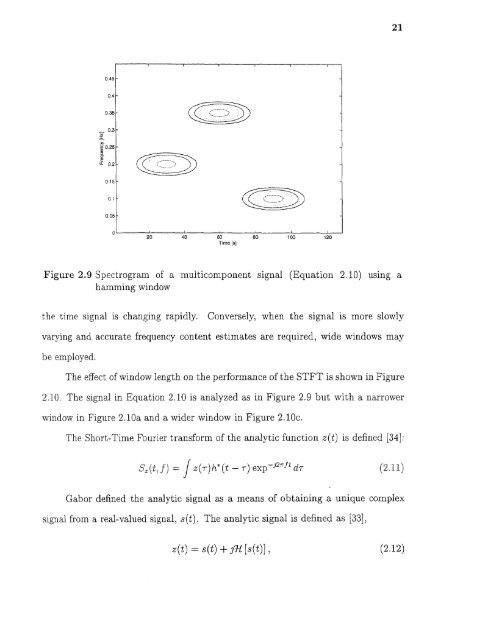Space/time/frequency methods in adaptive radar - New Jersey ...
Space/time/frequency methods in adaptive radar - New Jersey ...
Space/time/frequency methods in adaptive radar - New Jersey ...
Create successful ePaper yourself
Turn your PDF publications into a flip-book with our unique Google optimized e-Paper software.
21Figure 2.9 Spectrogram of a multicomponent signal (Equation 2.10) us<strong>in</strong>g ahamm<strong>in</strong>g w<strong>in</strong>dowthe <strong>time</strong> signal is chang<strong>in</strong>g rapidly. Conversely, when the signal is more slowlyvary<strong>in</strong>g and accurate <strong>frequency</strong> content estimates are required, wide w<strong>in</strong>dows maybe employed.The effect of w<strong>in</strong>dow length on the performance of the STFT is shown <strong>in</strong> Figure2.10. The signal <strong>in</strong> Equation 2.10 is analyzed as <strong>in</strong> Figure 2.9 but with a narrowerw<strong>in</strong>dow <strong>in</strong> Figure 2.10a and a wider w<strong>in</strong>dow <strong>in</strong> Figure 2.10c.The Short-Time Fourier transform of the analytic function z(t) is def<strong>in</strong>ed [34]:Gabor def<strong>in</strong>ed the analytic signal as a means of obta<strong>in</strong><strong>in</strong>g a unique complexsignal from a real-valued signal, s(t). The analytic signal is def<strong>in</strong>ed as [33],
















